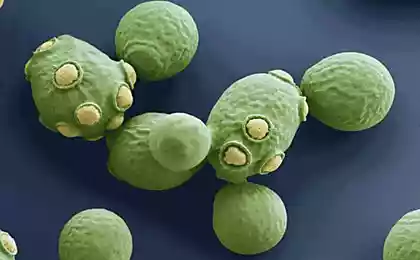695
Yeast parasites in our body.

MD, PhD, a naturopath doctor, Victor Khrushchev:
"I rule out his (and their patients) power modern bread.
The fact is that if we eat leavened bread,
the yeast, getting in our blood, begin to multiply,
consume our vitamins, minerals, proteins.
And at the same time, they release their vital activity products - toxins.
Those. yeast parasites in our body.
So modern bread, I think one of the worst inventions of humanity.
Modern yeast during baking go into the capsule of the gluten.
And in the gut are released from these capsules and damage the mucous membrane, disrupt the normal intestinal microflora.
Furthermore, not only they are parasitic in the intestine,
but live and multiply freely in the blood plasma
(Mostly by budding).
This can result in various types of intoxication,
fungal diseases, immune disorders,
that can lead to many chronic diseases and neoplastic processes.
And if you stop eating leavened bread modern
- Is only 5 years we find yeast cells in the blood plasma.
Up to 40-O's (of the twentieth century -. My comment) used an entirely different type of yeast.
They are also called the "hop".
These yeast were not antagonists of the human symbiotic microflora
(Ie, did not kill beneficial bacteria that live in the large intestine),
but the dough was rising about a day that did not suit the bakers.
To intensify the production process,
We started using yeast entirely different kind,
officially (and this is public information)
are considered "opportunistic microorganisms",
those. those that cause disease under certain conditions,
this is what is now called "thermophilic yeast".
Dough rises in such leaps and bounds in about an hour.
Thermophilic yeast, which are now used in breadmaking are antagonists of human symbiotic microflora.
This means that the allocation of these yeasts are killed in the large intestine of the microbes that normally should produce vitamins, essential amino acids, beneficial bioactive substances and much more,
necessary to the human body for normal functioning, t. e. for the health.
There are about 500 species of yeasts.
The most dangerous for humans - about 30.
In recent years, fungal diseases suffer without exception, almost all, with pharmacy drugs they are not treated.
According to various estimates, the prevalence of fungal infections covers 80% of adults and 95% children.
In recent years there has been a trend towards an increase in the incidence of fungal infections is not only in adults but also in children. Especially complex, systemic fungal infections. "























